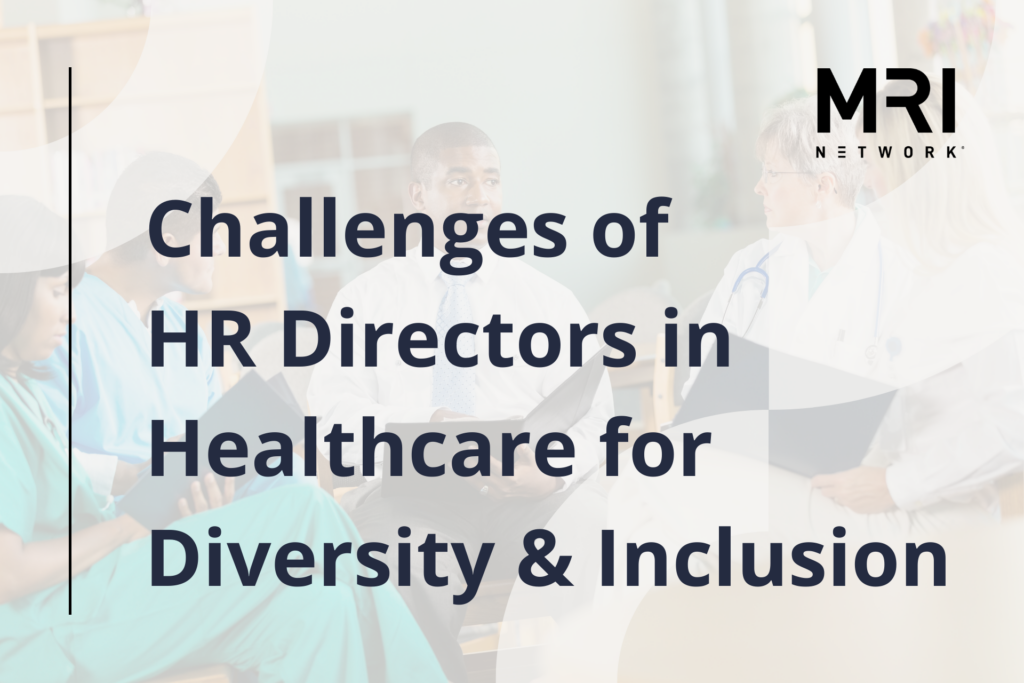You don’t need to be an HR expert to understand that the days of hiring a predominately white, male workforce are over. The face of the country is changing, and so is the workforce. This statement applies to a vast array of industries, including healthcare. However, like any complicated change, increasing diversity and inclusion in healthcare doesn’t happen independently.
A Diversified Workforce Takes Work
As an HR Leader, you must consciously create a diverse workforce. The medical field still needs major improvements in this area: According to published reports, major “diversity gaps” exist in race, gender, and sexual orientation.
So, how can your medical practice diversify your workforce? There are many potential options, including:
- Change where you advertise your jobs and make sure to launch them in areas that are typically more viewed by minority candidates.
- Create internships and pipeline programs that specifically target minority candidates.
- Create a brand and culture that embraces diversity, and ensure that value is reflected outside your organization.
- Audit your existing hiring policies to identify and remedy potential weaknesses.
However, hiring a diversified workforce is only part of the battle: You must retain your staff once you get them in the door. This means that you have to care deeply about the success of a hire. When it comes to hiring diverse candidates, you have to create a more inclusive environment.
Training To Create An Inclusive Environment
You can launch every diversity initiative worldwide, but if you fail to create an environment in which your entire workforce feels valued and supported, any diversity initiatives simply won’t work. As such, you have to create an inclusive environment.
What does this mean? Inclusion means that all people feel valued, respected, and heard – regardless of any traits like race or sexual orientation.
To create an inclusive environment, you need to:
- Remember that language matters. Use language that is person-centered and reflects the language preferences of the individuals in question.
- Engage in training that shows the importance of inclusivity to the other people in your workforce and your business model. Doing so may help to win over reluctant employees who don’t understand the value of inclusion.
- Actively seek employee feedback on what you are doing well and what you can do better, and make that feedback anonymously in areas where possible. This ensures your team feels heard. Then, follow up on that feedback.
- Create a training group or council that provides meaningful input and opportunities for inclusivity training and initiatives.
Altering The Culture
Remember that training is important but a means to an end: You need to create a culture that actively seeks diverse experiences and a workforce. In doing so, you can also create a more inclusive culture of different viewpoints, experiences, and backgrounds. After all, your employees will want to ensure that your culture is right.
Altering your work culture means changing your workforce’s attitudes, behaviors, and values. Changing these collections of beliefs is extremely difficult, but it can be done. Each company is different, but some general principles apply to making positive changes in workplace culture:
- Enhance transparency and work to create an environment in which all members of your team know that they will feel respected for airing concerns or questions.
- Empower employees by actively seeking to hear any issues they may have.
- Create opportunities for all team members to interact and get to know each other. You should also do this between departments.
- Ensure consistent training for all staff – from C-suite level to those at the bottom of your totem pole – that pushes your values and ensures your team knows what is expected of them.
MRINetwork is Here To Help
Diversity and inclusion is hard to get right. If you work in HR, you need expert guidance to keep informed about the latest trends and best practices. As leaders in the field of diversity & inclusion, we strive to keep healthcare leaders informed about the latest trends in this area. Want to learn more? Click here to learn more about us, and follow us on LinkedIn for more information about diversity & inclusion within the healthcare world.

Connect with MRINetwork